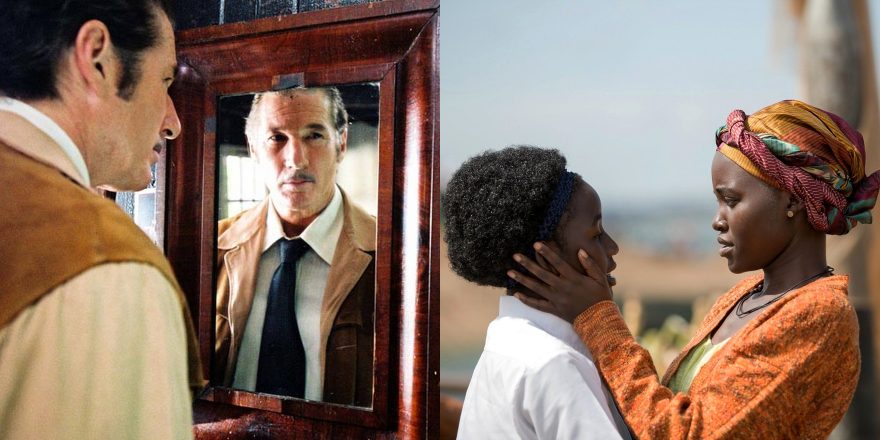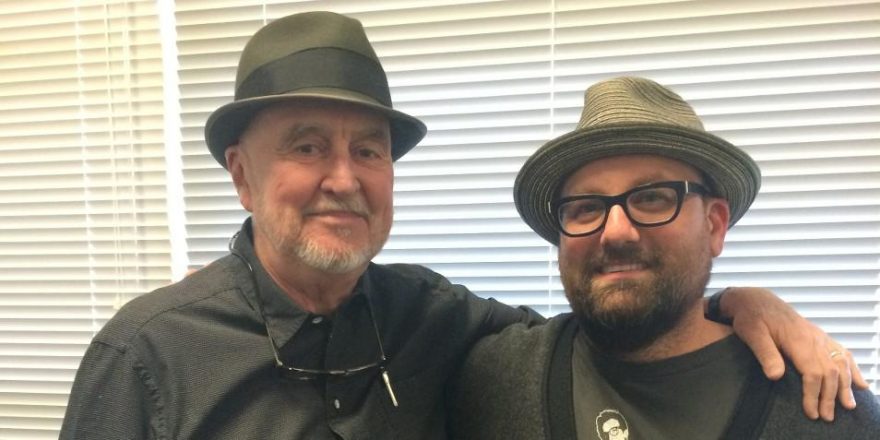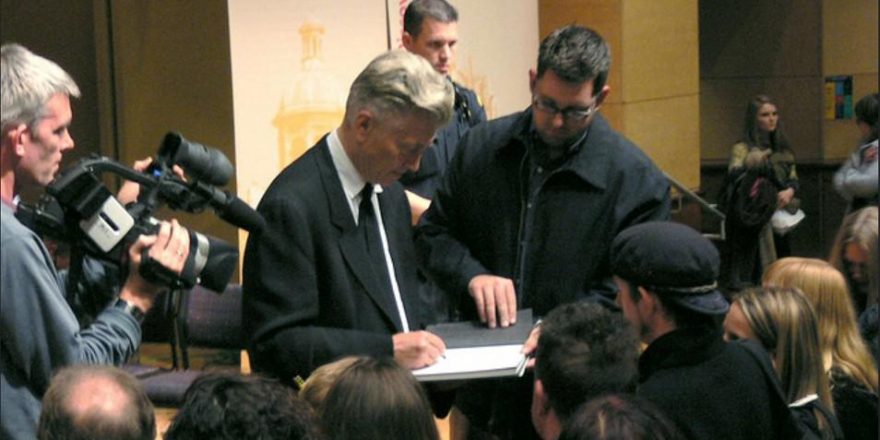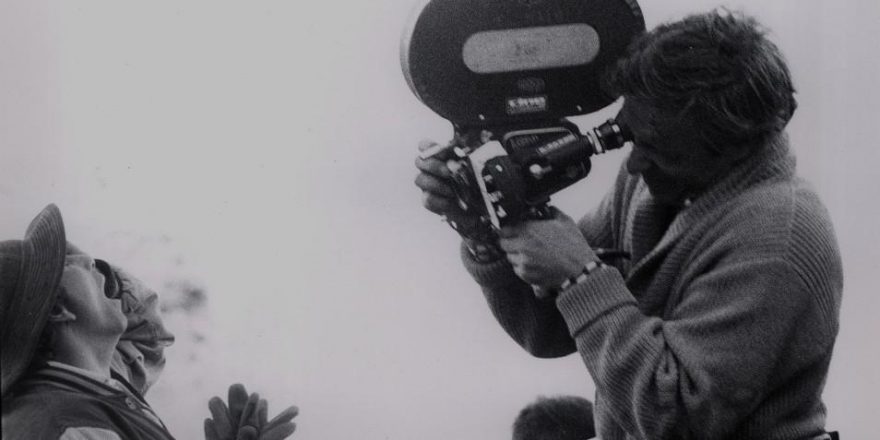After the divorce of my parents, my dad became a visiting custodian of the twice-a-week-shoot-the-shit-at-Pizza Hut variety. As he worked his way through a six-pack, he’d opine on the state of the world as my brother and I perfected smiles that feigned interest. Jerry even employed catchphrases like “The Enemy is Anomie” (anomie = “lack of ethical standards in an individual or group”), the better to squeeze dropperfuls of his genteel brand of high liberalism down our teenaged gullets. And he never shut up about empathy. Reporting an occasion at school when I graced an isolated Russian émigré with my presence over lunch and kept the little commie company, I thought my dad would injure his tear ducts congratulating me.
“If there’s a God up there, that’s the kind of thing he’d approve of,” Jerry gushed, polishing off Bud Light number seven.
With a grandiosity that grated, he would rally us to embrace The Other even as his Ivory Tower passivity prevented him from completing more mundane tasks like providing child support to our mother. The Other needed a shit-ton of help, but apparently our poverty-line-adjacent matriarch could manage just fine on her own.
My response as a young cinephile was to retreat into the worlds of divinely self-absorbed anti-heroes that reflected my own reaction formation. “Fast” Eddie Felson in The Hustler; Richard “Ricky” Roma in Glengarry Glen Ross; Sonny Wortzik in Dog Day Afternoon – these unrepentant strivers fascinated me. White, male, American, resentful, gifted and greedy, these characters spoke to the exact parts of myself that most mystified my father.
In my twenties, I avoided neutral day jobs like waiting tables. Instead I liked selling things over the telephone. The friction of confrontation, the sacred moment when you asked for the sale and then Stopped Talking; this kind of interaction was for me the psychic equivalent of a drag race. In these contests, I was uninterested in empathy; in fact, I worked to fight off my own natural inclination toward emotional porousness. Experiencing my own persuasive power by successfully willing another person to a particular course of action? This was the drug that satisfied.
As a screenwriter, the characters that populated my early efforts were variations on the Fast Eddie archetype. I created Pendleton Wise, the telemarketer at the center of my film The Prime Gig. I fashioned Clifford Irving, the swindler who convinced the world he had co-written Howard Hughes’ autobiography in The Hoax. The second acts of both these screenplays rock pretty hard, while the third act of each is fairly pedestrian. The dramatist in me understood these stories were tragedies and that these protagonists had to end up poisoned by their lust for material rewards, but I was turned on more by the original sins than by the inevitable counter-punch by the Fates. The truth is, I enjoyed spending time with these criminals and I was partial to their tactics.
I conjured con men and spies and bank robbers and even a serial killer (though this I found vaguely nauseating). These were characters with broken moral compasses living inside stories that critiqued them for said brokenness. Participating in their wild gambles was enthralling to me even as the fictional worlds they inhabited were feeling more like solipsistic feedback loops of sin and punishment. It was irrelevant. Producers and studios were receptive to my hustlers. I made a good living for a number of years hanging out with a bunch of pricks (the characters and the producers both). I hung my hat on them. And I got bored.
I met Mira Nair for the first time over the phone. She had submitted for my consideration a sharp-elbowed provocation of a novel called The Reluctant Fundamentalist. Reluctant’s protagonist was a stockbroker of Pakistani descent bent on living the immigrant’s version of the American dream. He is persecuted unjustly after 9/11 to the point where he abandons his adopted country to return to Pakistan, where he now may or may not be a terrorist himself. This was a motive system for a protagonist I had not tackled before. I was used to characters whose demons were primarily internal. Changez in Reluctant did not sabotage his own life, it was sabotaged for him by unjust systemic forces.
I noticed quickly – and not necessarily in a favorable way – that Mira approached the entire process of creating stories from a social and political perspective. Her rush came from exposing stories from hide-in-plain-sight universes like India, Uganda and Pakistan to a wider audience. An immigrant herself, Mira seemed animated not primarily by the need to work out her nuclear family neuroses through art (though she’d probably say that’s part of it) but by a moral determination to shift perceptions in her audience.
By happenstance, I had recently begun working as a mentor in the Sundance Institute’s International Screenwriters Labs. While working on Reluctant with Mira, I traveled to meet and mentor filmmakers in places like Istanbul, Mumbai and Amman. I felt creatively re-energized by the passion of these artists. They had very little access to financing or even a filmmaking industry yet they remained locked like snipers on their target: telling their individual and cultural stories to a world whose eyes seemed glued to Western film and television. On one hand, there was a great love of American and European cinema, but there was earnest impatience with the narrow-cast of perspective. They had their own gangster stories. Their own losers, drifters, con men and shape-shifters. And new kinds of characters I’d never seen before.
In our process on Reluctant and our subsequent collaboration Queen of Katwe, a real-life fable about Phiona, a young girl from the Ugandan slums who discovers a talent for chess, Mira and I wrestled with the problem of how to draw these characters truthfully. I immersed myself in research. Whether in free-wheeling discussions about Pakistani politics with Mohsin Hamid, author of The Reluctant Fundamentalist, or visits to the slums of Katwe, where I played chess with Phiona and met the members of her family, over a period of time I felt the porousness I had struggled to suppress re-emerging. I slid psychically into the hopes, fears and perspective of persons in very different circumstances than myself. My hustlers were stand-ins fighting internal battles I had litigated many times and my capacity to be moved by their knotted self-abnegation had atrophied. But when writing scenes about Changez being abusively interrogated by racist cops or Phiona finding herself sneered at by rich, private-school opponents – I found myself enraged in a way that was not theoretical, it was personal. Exposure to fresh (for me) templates of human experience in stories I was consuming and stories I was now telling had lit me on fire again as an artist. It was not a huge leap to imagine that audiences might likely be refreshed in the same way.
We in the West live in a cultural field of calcified images and people, where most of us have seen six versions of Spider-Man but only a few of us have seen a film told through the eyes of a person living in China (1.4 billion people) or India (1.2 billion people). We then find ourselves surprised that fear of The Other corrupts our civic life. We struggle with the question of how to bridge gaps of understanding between native and immigrant communities.
“Our” stories are not primarily national, ethnic or localized. They are universal human tales that in many cases are uncannily similar. Allowing our Western selves the luxury of experiencing protagonists with different skin or geography or language is not a box-checking exercise in a politically correct parlor game. It’s a gift that allows us to feel safer and more at home in the rest of the world.
In the gnostic Gospel of Thomas, Jesus says, “Cleave the wood: I am there. Lift the stone and thou shalt find me there.” Jesus was announcing His Holiness could be found not only in different shades of human masks but in even inanimate objects. There is no such thing as an “Other,” Jesus seems to be saying, only a harmonious connected whole composed of all manner of people and things. In the new direction my work has taken, I find I’m drawing a deeper appreciation of those Pizza Hut dinners with my Dad. Taking an empathic leap beyond our own psychic drawbridges into wider perspectives rewards us by proving our common humanity can be found in many different kinds of mirrors.







